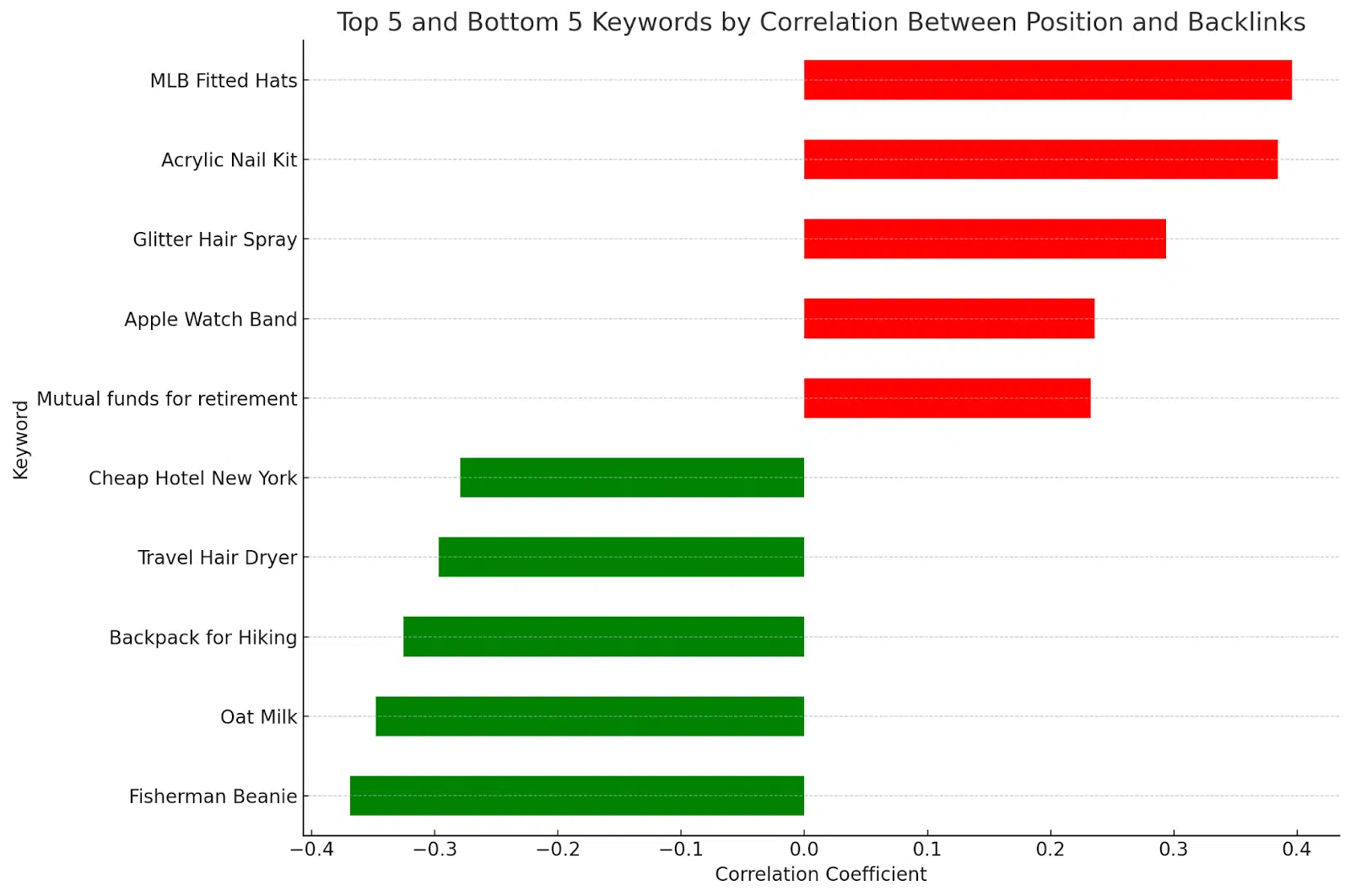Reassessing the role of links in SEO: What data tells us
Is your SEO strategy too focused on backlinks? Here's what the data reveals about the relationship between links and search rankings today.
The debate over the significance of links has been a recurring theme in SEO.
Recently, Google’s Gary Illyes has once again ignited discussions around the topic when he said that “people overestimate the importance of links,” and it hasn’t been in the top three ranking factors for some time.
Such statements from Google have been made in the past, prompting SEO professionals and businesses to reconsider their strategies.
This got me thinking about how essential links really are today. What would the data show?
To find out, I analyzed 100 random keywords spanning various categories, collecting data on the top 100 ranking websites, including referring domains and backlinks. This comprehensive dataset consisted of over 10,000 rows of URL ranking data.
It’s important to note that correlation does not imply causation, especially considering Google’s stance on the ever-evolving nature of ranking factors. However, digging into the data can give us a sense of where links are more important as a category.
Data analysis and key findings
Considering Illyes’s comment, I initially expected we would find a moderate link between backlinks and rankings, but nothing that suggested this was the key to improving rankings.
Probably for the first time in a while, the data aligned with this hypothesis.
To conduct this analysis, I divided the 100 keywords into specific categories: Electronics, Health and Beauty, Entertainment, and more.
In correlation analysis, a higher value indicates a stronger relationship between the two variables, while a value closer to zero signifies a weaker relationship.
In the context of our analysis, where the goal is to achieve the top rank, an ideal score is -1. This means that as the number of backlinks increases, the ranking “decreases” or moves closer to the number one position.
Here are the takeaways from the data:
- No keyword grouping or individual keyword was greater than -0.4. This means no data set was super highly correlated.
- There were keywords and groups that, when the number of links increased, rankings actually decreased (these would be positive correlations given the rank numbers get higher). However, again, nothing was greater than 0.4.
- The highest correlation groupings were Outdoor and Sports and Health and Wellness.
- The groupings where links drove a decrease in rank were Home and Kitchen and Ecommerce and Online Services.

- At a keyword level, “fisherman beanie” and “oat milk” showed the greatest correlation, while “MLB fitted hats” and “acrylic nails” were the lowest. (The graph below that shows the keyword level only graphs the top and bottom five.)

The importance of links today: 3 key takeaways
Knowing that the correlation coefficient aligns with Google’s point, what should we do with this information? How should we alter or think about your own brand’s link profile?
Here are three takeaways and recommendations from this data set for your SEO strategy.
1. Links are a great signal that users value your content
While Google emphasizes that links aren’t as powerful a ranking factor as in past years, they remain a valuable signal.
Consider them an indicator of user and website endorsement for your content and products. If a specific blog post or product garners a substantial increase in links, it signals user appreciation.
Redirect your efforts accordingly – create more content or products in that area or intensify your promotion.
These links provide essential intent-based data for optimizing your time, even if it doesn’t always translate into higher rankings.
2. You should always be evaluating your competition and specific data sets
With over 10,000 data points, our dataset holds significance, but it’s not tailored to your brand or industry. Use this article as a guide to analyzing your own data for insights.
Examining your top 100 keywords will clarify your competitive landscape, enabling more focused strategy development.
If other brands in your space have significantly more links, it signals a challenge, but remember, links aren’t the sole driver of rankings. Instead of feeling overwhelmed, use this data to inform and refine your strategy.
3. The fundamentals have been, and will always be, the North Star for organic search
SEO’s original objective is to boost brand rankings, a goal that remains relevant today.
However, the emphasis has shifted toward delivering a great user experience, evident in Google’s E-E-A-T framework: Experience, Expertise, Authoritativeness and Trustworthiness.
E-E-A-T underscores the significance of user experience and values. They don’t advocate link acquisition as the primary strategy but instead highlight the importance of building a website that enhances the value of your goods or services for end-users.
This user-centric approach should be your guiding light.
Reassess the role of links in your SEO efforts
I found this dataset interesting as it spans various industries and consistently suggests that while links matter, they are not the sole determinant.
I’ll closely monitor how the data evolves with large language models incorporating more links, which could reshape link values and website visibility.
It’s an exciting time for search, marked by innovation, and data will be our compass to gauge the changing landscape. I’m eager to see how links continue to influence rankings in this next phase.
Opinions expressed in this article are those of the guest author and not necessarily Search Engine Land. Staff authors are listed here.
Related stories
New on Search Engine Land